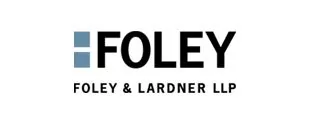Editor's Note: We are excited to announce that this article is the first of a series addressing the intersection of payor/provider convergence and the issues that plague insurance and health companies, payors, and providers. We will be addressing various considerations including the end of the Public Health Emergency, CMS' innovation models and trends, private equity in the risk bearing space, expansion of coverage for telehealth services and more.
Welcome to the Payor/Provider Convergence Series of the Health Care Law Today blog. This series is dedicated to exploring the intersection between payors and providers in the health care space; in particular, the evolving trend toward value based payment structures. Payors and providers in the health care space both want high quality and cost effective care delivered to their members and patients, and these two groups are finding new ways to achieve their mutual goals.
Health care providers are increasingly taking financial risk in their contracts with health insurance companies and, in turn, health insurance companies are becoming more involved in the delivery of care. As each group begins to take on certain characteristics and responsibilities of the other, it is important that they understand the scope of the laws and rules applicable to them.
For example, health care providers and health insurance companies may enter into payment structures where the insurers pay providers to manage a specific types of care for a group of patients. In a traditional fee for service model, providers bill for each individual service provided to their patient and, as such, providers are financially incentivized to provide extra goods and services. In contrast, in a value-based model, it is up to the provider to manage the funds, which incentivizes providers to deliver the most appropriate care.
Value-based models of care may require providers to obtain an additional level of registration in certain states. Health care providers should be wary of crossing the line into becoming an insurer without understanding the implications and the accompanying regulatory obligations.
On the other side, insurers may need to engage medical professionals to perform medical record reviews and audits of these value based arrangements to accurately measure the quality and value of care provided beyond the review required for a traditional fee for service claim, and to provide effective utilization review and care management.
Even further, some health insurance companies have entered into the business of providing health care themselves by acquiring professional practices, in some cases at significant scale.
Payors and providers must understand the incentive structure of the other, and this series will focus on laws and rules applicable to the intersection of the two. Future topics in this series will include:
- Medicare Advantage updates (for information on the Medicare Advantage 2023 Final Rule, click here)
- Implications of the ending Public Health Emergency
- Risk bearing entities and private equity in the risk bearing space
- Knox-Keene plan regulations
- Addressing social determinants of health
- False Claims Act risk adjustment for payors
- No Surprises Act developments
- Expansion of coverage for telehealth
- CMS's innovation models and trends (e.g. accountable care organizations (ACOs), oncology care models, and Center for Medicare and Medicaid Innovation (CMMI) payment models)
The content of this article is intended to provide a general guide to the subject matter. Specialist advice should be sought about your specific circumstances.




